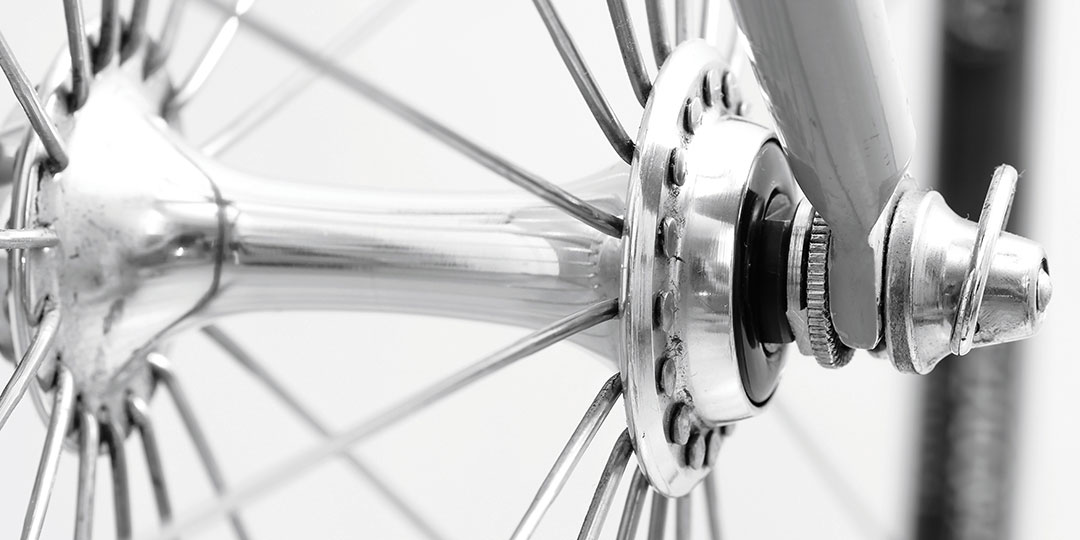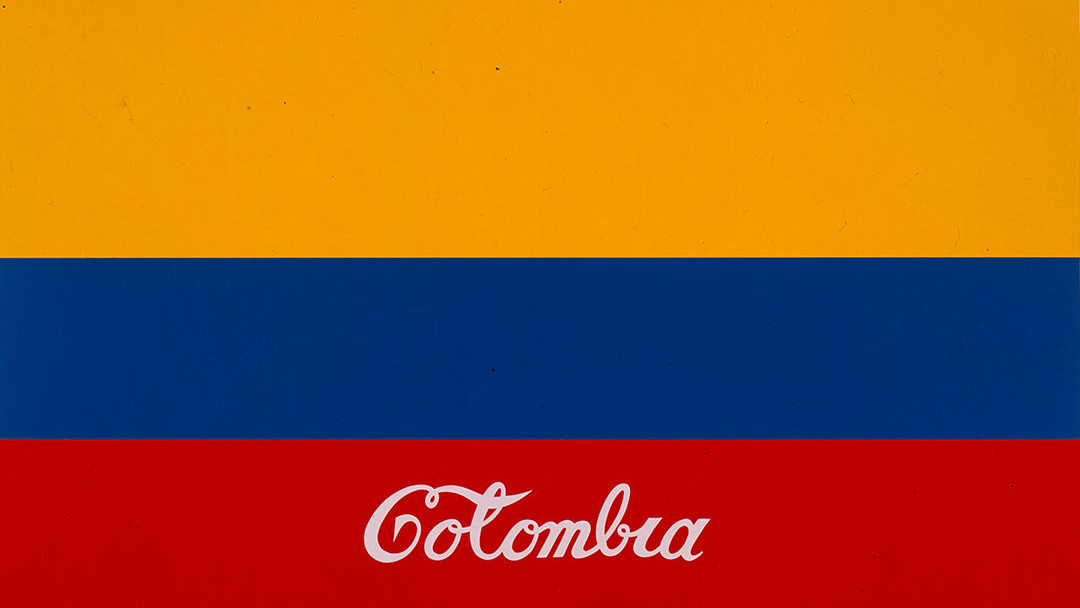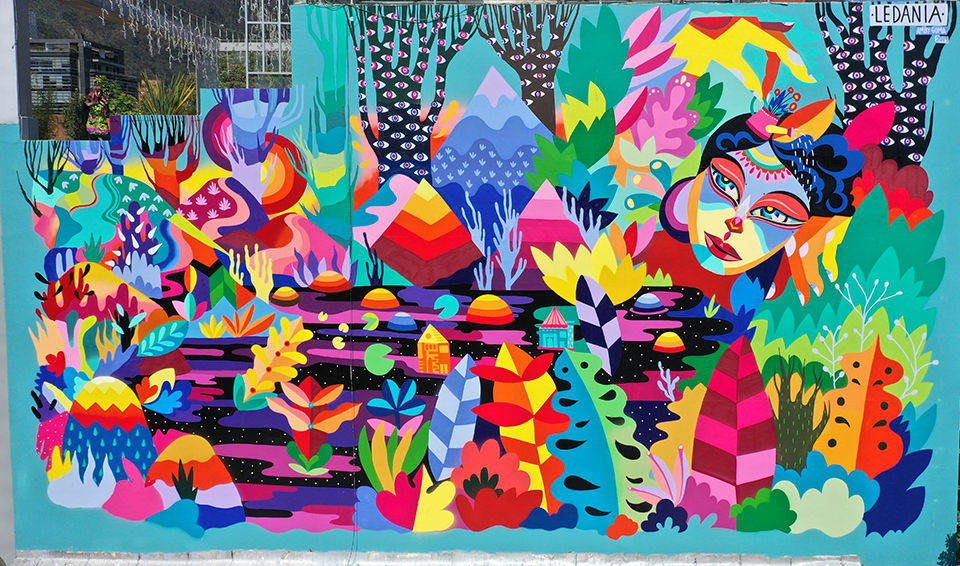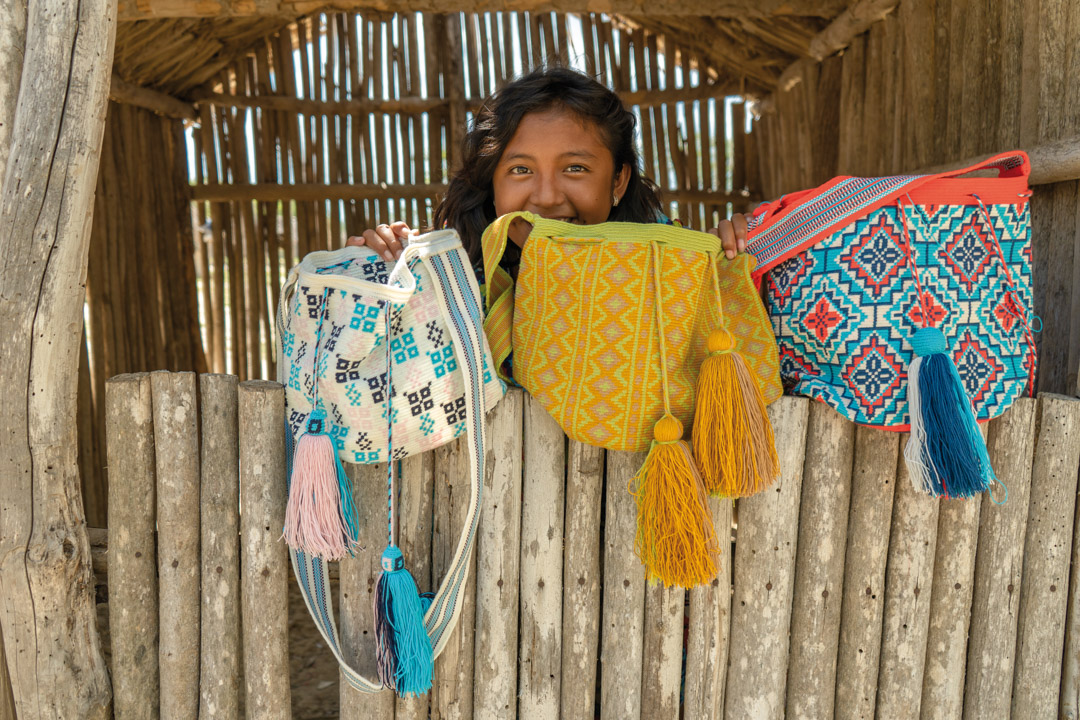
How Colombian tradition fits in Wayuu bags
Colombia is a country of traditions, a multicultural nation that reflects the diversity of this region with a blend of colours and ideas that are recreated in their handicrafts. Among the best-known handcrafted products in this coffee-producing country are the Wayuu bags – made by Wayuu people, woven using distinctive materials and designs that make these objects unique.
Wayuu means “People of sand, sun and wind” in the native Wayuunaiki language, which belongs to the Arawakan family of languages and is a central element in the ethnic and cultural identity of these great craftswomen who have fought tirelessly for their rights. “There is no artistic creation of our own, as an indigenous people, that we have not conceived from the depths of our being and feeling as part of a millenia-old people” explains Ana Delia Fernández Sijuana, an indigenous member of the Wayuu people.
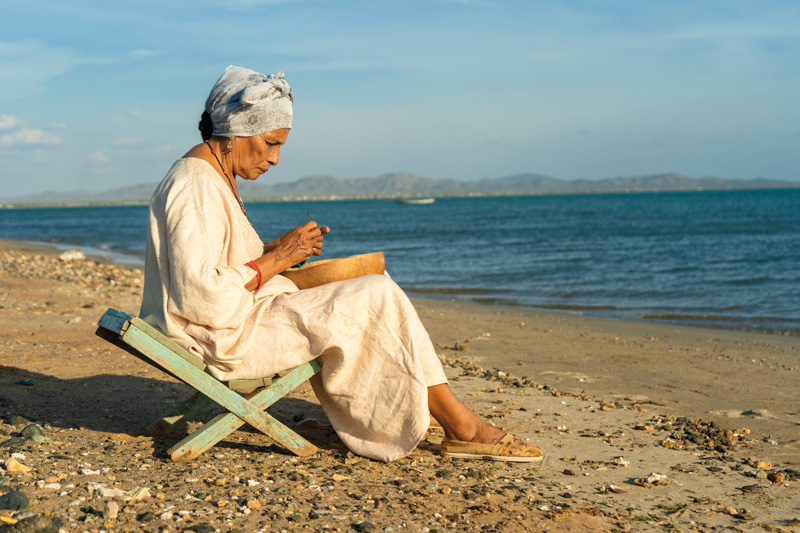
The bags are a prime example of Wayuu weaving crafts. Wayuu bags are handmade and the materials and threads used to make them are wild cotton and natural fibres from La Guajira (in Wayuunaiki: Wajiira), one of the 32 departments forming the Republic of Colombia, which can be most accurately translated as “Fair Caribbean”.
The artisanal fabrics of the Wayuu community play a very important role in their culture because they reflect the tradition handed down by women from generation to generation, and the expressive elements in the craft mean that each finished item has its own specific social value, responding to the demand for handicrafts.
Discover Colombia, one of the world’s most biodiverse country.
The tale behind Wayuu bags
The Wayuu are said to have learned to weave from a mythical spider called Wale’kerü. This spider created magical pieces using the thread from her mouth and is reputed to have taught Wayuu women their crochet skills.
Legend has it that the craft of weaving originated from this spider who secretly wove sashes and bags in the moonlight. One night a young girl came to admire her artistry with the thread and the spider was moved to offer to teach her what was her most precious skill: the art of weaving.
This ancestral technique dating from the Pre-Columbian period is still being used to this day, thanks to the skills handed down by women of this ethnic identity in Colombia.
The story also tells us that Wale’kerü fell in love with a Wayuu boy and ran away with him. The young man’s mother gave the spider some cotton for them to have some shelter in the wilds. The spider ate all the cotton and the thread ready for weaving began to come out of her mouth. As time passed, Wale’kerü began to teach the young women in the community to weave, but asked them to pay careful attention and not to let their minds wander, as she couldn’t always be there to teach them.
Since then, in Wayuu creation myths, weaving has been more than just a cultural practice and an ancestral tradition; it is a way of thinking about and expressing life, in tune with their feelings and desires. The rich Wayuu craft tradition has grown out of the secrets of weaving and their relationship with a particular feminine spirit. In Wayuu culture, the feminine spirit is as important and immortal as the women’s weaving: indeed, the community is organised in matrilineal clans. In the home, women weave, care for their children and look after the house; and in the village, their mere presence serves as a symbol of respect and unity.
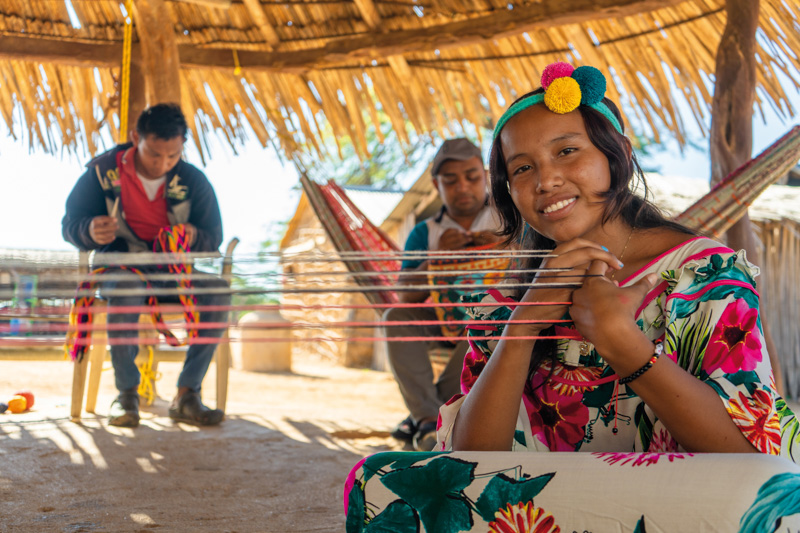
According to research into the Wayuu tradition, when girls reach adolescence, they go to “Süttüsü Paülü’ü”, an “enclosure” in the homestead where they learn the art of weaving and the wisdom needed to perform their role as women, the central pillar of the matrilineal Wayuu society.
There, the adolescent girls are taught by their mother, grandmother and maternal aunts to spin thread, working the loom to weave hammocks and sashes and to make cords and Wayuu bags. Throughout this process, the young women are accompanied by the spirit of Wale’kerü, the spider from Wayuu myth who taught them to weave.
The designs and unique colours of Wayuu bags
The Kanás symbols in Wayuu weaving are distinctive and each one has a specific meaning. Some of them indicate the paths, the poles and roofs of the homesteads, the allegory of horses’ hoof prints in the ground and also figures that represent the social pyramid of this ethnic group.
This ancestral technique dating back to Pre-Colombian times is still used today. The motifs in these designs express how the Wayuu interpret elements of their everyday lives and often consist of geometric compositions that are repeated to form a pattern. The bright colours reflect the Spanish influence on the Wayuu during the years of colonisation through the use of acrylic threads that came from Europe in a wide palette of colours.
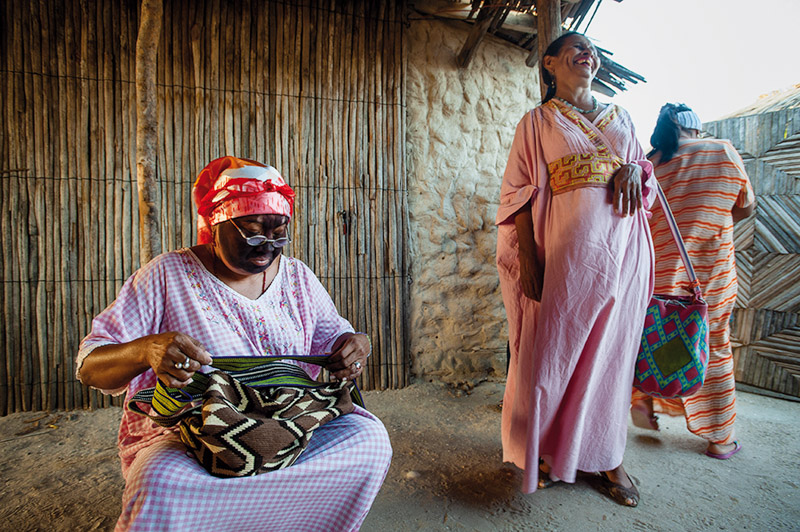
The base of a Wayuu bag is normally around 25 to 27 centimetres across (10 to 12 standard thumb widths), meaning that each woman weaver will have to turn the work 22 to 25 times to create each bag, a task that takes around 20 days.
Like many cultures, the Wayuu have their god, who they call Maleiwa, the creator of all the wonders of nature and their principal god. There is also Juya, the god of rain, as well as Pulowi, the goddess of drought and the winds.
Each clan is associated with one or several animals, providing an ancestral set of symbols. These are mainly mammals, birds, reptiles and insects. For example, the members of the Uliana clan are associated with the tiger and the rabbit, those of the Iipuan clan with the karikari hawk, and those of the Pushain clan with ants and other symbols representing how to interpret the world of this ethnic group, such as that of the snake, the fish eye and the turtle shell, among others.
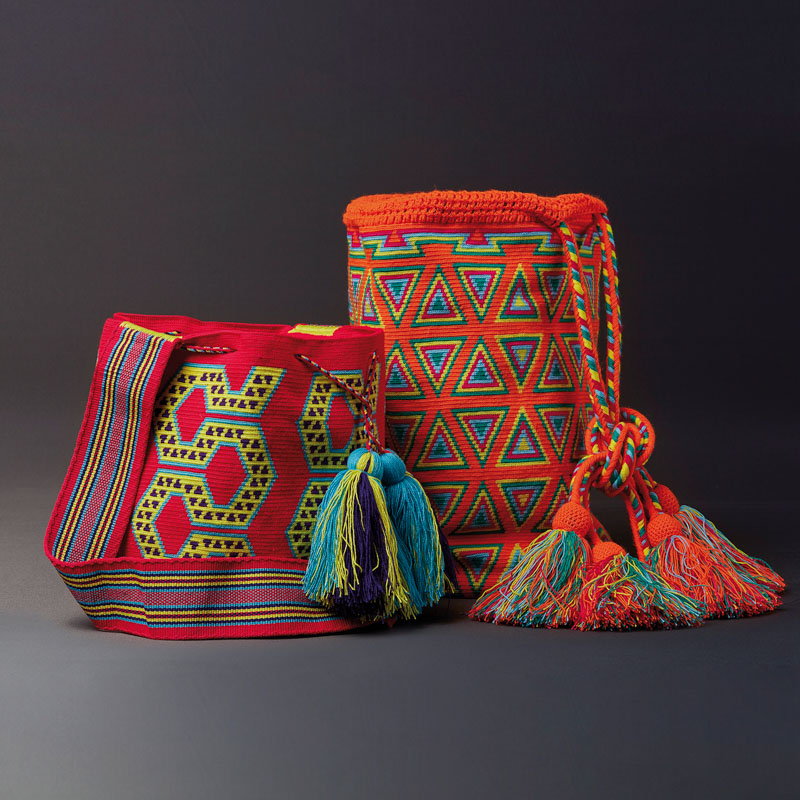
There are other symbols such as the great grebe, which represents the Epieyuu clan; the tiger representing the Urianaclan; the thickhead ground snake as the symbol of the Jusayuu; the donkey representing the Epinayuu clan, the ant as the symbol of the Pushaina and the partridge, which represents the Wouliyuu clan.

For the Wayuu people, weaving symbolises a way of understanding life and celebrating their ancestral culture, as a bridge for communicating with the world and keeping their traditions alive. Women have been foremost in championing this legacy, opening up channels for bringing this tradition to others and handing down their skills from one generation to the next. In recent years, the Wayuu bags have been widely marketed throughout Colombia and have become one of the country’s most popular handicrafts.
Wayuu bags, a handicraft with designation of origin
In 2011, Wayuu bags were declared an official designation of origin in order to protect the intellectual property of this indigenous community and its artisans. A controversy broke out at the time as the result of a Spanish magazine featuring the collection of a designer who presented several Wayuu bag designs as being her own. This led Artesanías de Colombia (a public-private enterprise defending the craftspeople) to deploy considerable resources in protecting not only the bags but the whole weaving culture of this community and many of the country’s other traditional crafts.
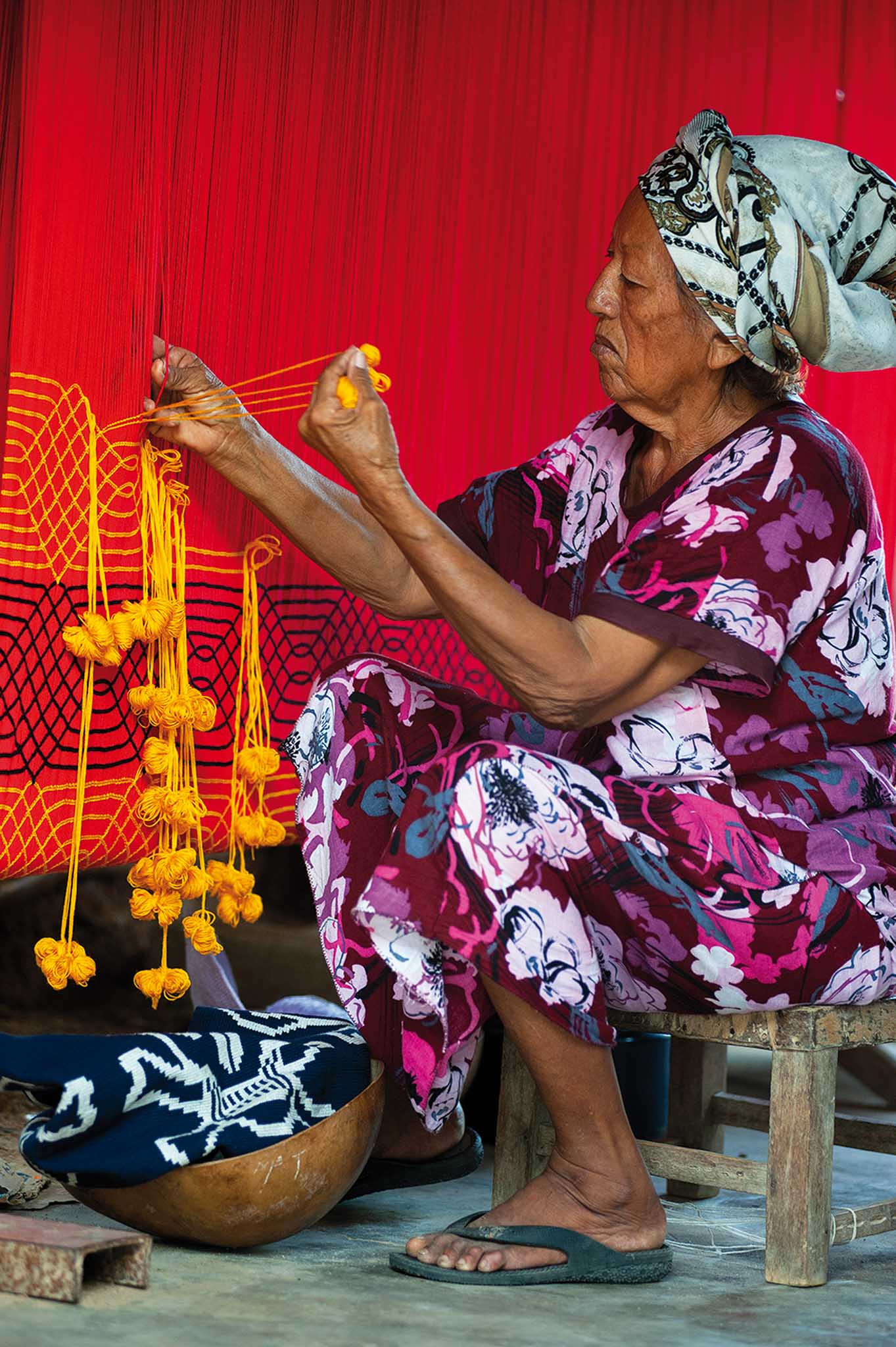
The issue of intellectual property rights is enshrined in the Free Trade Agreement signed with the European Union, meaning that Colombian handicrafts bearing the designation of origin enjoy protection in Europe. In recent years, 12,500 handmade mochilas – the Wayuu bags – from Colombia have been sold in Poland and Portugal. Colombia today has 12 artisanal products with official designations of origin, “becoming the country in Latin America with the highest number of Designations of Origin in the artisanal sector” says Adriana Mejía, manager of Artesanías de Colombia. In addition to recognising the collective efforts of local artisans and offering buyers a guarantee of quality, “the award helps prevent the sale of counterfeit products, which directly undermines producers, and protects the intellectual property rights of artisans,” concludes Adriana Mejía. Every penny earned from the sale of handicrafts goes directly to the community of artisans involved in their production.
